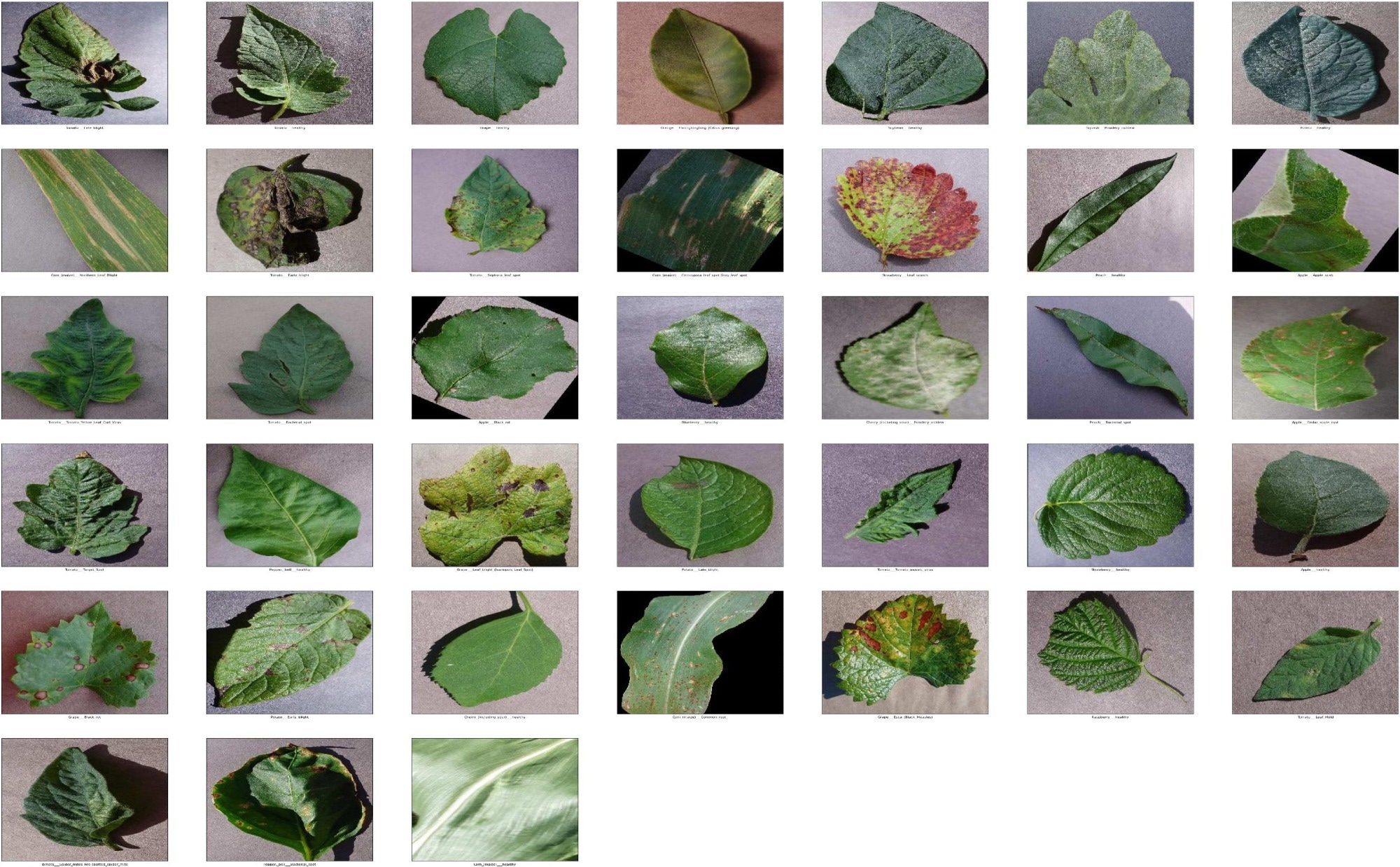In a paper published in the journal Ecological Informatics, researchers tackled the significant issue of agricultural produce loss due to plant diseases by developing an automated early detection system using an ensemble of deep-learning (DL) models (densely connected convolutional networks (DenseNet201), efficient network (EfficientNetB0), inception residual network version 2 (InceptionResNetV2), EfficientNetB3).
 Grid of images contains plants and their corresponding diseases. Image Credit: https://www.sciencedirect.com/science/article/pii/S1574954124001602
Grid of images contains plants and their corresponding diseases. Image Credit: https://www.sciencedirect.com/science/article/pii/S1574954124001602
Their approach includes novel image-processing and data-balancing techniques to improve model efficiency and address dataset imbalances. Testing the comprehensive PlantVillage dataset, the ensemble achieved a higher accuracy, demonstrating superior performance in generalizing to real-world scenarios compared to state-of-the-art models, as evidenced by higher accuracy and F1 scores.
Related Work
Past work in plant disease classification has involved image pre-processing, feature extraction, and model development using techniques like image enhancement, segmentation, and various classification models such as support vector machine (SVM), k-nearest neighbor (KNN), and deep neural network (DNN). Efforts include using DCNNs, transfer learning models, and architectures like AlexNet and ResNet. Data augmentation techniques like generative adversarial networks (GANs) have also been explored. Recent studies focus on creating new datasets and lightweight CNN architectures.
Enhanced Plant Disease Classification
The approach proposed in this work involves several key steps to enhance the accuracy of plant disease classification using deep learning. First, the dataset is balanced using the class-weighted technique to address the bias towards classes with larger images. It is particularly important as the PlantVillage dataset used in this study needs to be more balanced.
The class-weighted technique assigns higher weights to minority classes during training, helping to improve model performance. Additionally, a novel image pre-processing technique is introduced to enhance the quality of the input images by removing distortions and adjusting colors, converting images from RGB to Lab* color space, and applying contrast-limited adaptive histogram equalization (CLAHE) and Adaptive Median Filters.
The dataset utilized in this work is the new PlantVillage dataset, which is freely available online. It comprises approximately 87,000 RGB images of healthy and diseased crop leaves categorized into 38 classes. The dataset is divided into an 80/20 ratio for training and validation while preserving the directory structure. This dataset includes various plant diseases, making it a comprehensive resource for training deep learning models. Example images from the dataset illustrate the diversity of plant diseases the proposed model addresses.
Five DL architectures for plant disease classification are proposed: DenseNet201, EfficientNetB0, EfficientNetB3, InceptionResNetv2, and ResNet50v2. These models were chosen for their state-of-the-art performance and ability to handle complex image data. To further improve classification accuracy, different ensemble models were tested and compared. Ensembles combine the strengths of individual models, leading to more stable and accurate predictions. The team employed transfer learning to retrain these models on the PlantVillage dataset, leveraging knowledge from pre-trained models on the ImageNet dataset.
The proposed models' and ensembles' performance is evaluated using accuracy, precision, recall, and F1-score metrics. Accuracy measures the overall percentage of correct predictions, while precision and recall provide insights into the correctness of positive predictions and the ability to identify true positives. The F1 score combines precision and recall into a single metric, offering a balanced measure of model performance. These metrics ensure a comprehensive evaluation of the deep learning models, highlighting their effectiveness in plant disease classification.
Automated Disease Classification
The study aimed to develop an ensemble model for automating the classification of plant leaf diseases, addressing the critical need for efficient agricultural produce preservation. Unlike previous ML approaches requiring manual feature engineering, this study leveraged deep learning, eliminating the need for such manual interventions.
Key contributions include a novel image pre-processing algorithm, balancing the dataset, and evaluating various deep-learning DL models and ensembles. Through experimentation with different models and ensembles, including DenseNet201, EfficientNetB0, EfficientNetB3, InceptionResNetv2, and ResNet50v2, alongside innovative pre-processing techniques, the study achieved high accuracy in classifying plant diseases, demonstrating promising potential for automated agricultural systems.
The highest accuracy, 99.89%, was attained using an ensemble model combining EfficientNetB0, InceptionResNetv2, Desnet201, and EfficientNetB3. This study addresses a broader dataset encompassing various plant diseases and comprehensively compares deep learning models and ensembles, offering insights into their performance. While computational power constraints may limit the application of ensemble models, future research avenues include exploring lighter models and integrating explainability features for enhanced user confidence in the system's decision-making process.
Conclusion
To sum up, this study introduced a novel approach to plant disease classification using deep learning. Key contributions included a new image processing algorithm (CLAHE with adaptive median filter (AMF)) and a data balancing technique (class weighting). Five state-of-the-art DL models and their ensembles were tested, demonstrating high accuracy.
The methodology involved balancing the dataset, enhancing image quality, fine-tuning pre-trained models, and comparing ensembles to identify the best-performing model. Future work will explore other deep learning architectures, train models from scratch, and consider the fusion of handcrafted and non-handcrafted features. Additionally, incorporating explainability into the models will be a focus.